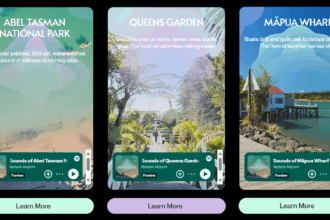Auckland Airport has finished a major programme of stormwater upgrades aimed at improving resilience to extreme weather and protecting the Manukau Harbour.
The project included 4.4 kilometres of new stormwater pipes — some wide enough to stand upright inside — along with upgrades to multiple stormwater ponds and the installation of a new treatment system. The additions form part of the airport’s 150km stormwater network.
Chief Strategic Planning Officer Mary-Liz Tuck said the upgrades were an essential step in preparing for the future.
“Not only does Auckland Airport connect almost 19 million people and $26.6 billion worth of trade every year, but it is also a lifeline utility for our city. As New Zealand’s gateway airport, we need to be ready for more frequent and more severe weather events, and these upgrades are a vital part of that resilience.”
The push to accelerate work on the stormwater system came after the floods of early 2023, when a month’s worth of rain fell in just a few hours. Stormwater systems across Auckland, including those at the airport, were overwhelmed and flooding caused significant disruption at the international terminal.
“Experiencing the flooding was an incredibly challenging moment for travellers and everyone operating at Auckland Airport,” Tuck said. “However, like other infrastructure owners in the Auckland region, it’s ultimately sharpened attention on how we plan infrastructure in the face of more extreme weather events.
“For Auckland Airport, we chose to bring forward our planned stormwater upgrades and upsize designs. It’s also brought more focus to how we approach stormwater upgrades and renewals as part of our wider infrastructure programme, ensuring we are responding to the changing climate and building a robust and future-ready airport.”
Alongside the extra pipework, the airport has built New Zealand’s first coupled wetland biofilter on the edge of the Manukau Harbour. The system is designed to manage stormwater from over 100 hectares of land, including the airport’s international airfield, and uses natural processes to clean water before it flows into the harbour.
With a footprint the size of 14 Olympic swimming pools, the biofilter was designed to be compact while still treating three times the volume of water compared to a traditional pond.
“That’s down to smart design and it means we can keep building for New Zealand’s future aviation needs while strengthening environmental outcomes,” Tuck said.
The biofilter cleans stormwater in three stages: first slowing water through a sediment forebay, then passing it through a wetland planted with 20,000 native plants, and finally filtering it through soil layers in biofilter cells during heavy rain before it reaches the harbour. To prevent attracting birds near the runway, the 20,000 square metre system is fully netted.
Performance of the system will be monitored through different weather cycles, and the data will help shape future upgrades across the airport’s stormwater network.
Tuck said sustainable water management remains a priority for the airport, which worked with iwi to ensure cultural and environmental input shaped the project’s design. A cultural marker has been installed on the site to acknowledge archaeological discoveries made during construction.
“This is a long-term commitment to protecting the environment while enabling progress,” Tuck said. “We’re building not just for today, but for the future of air travel, our communities, and the harbour we’re proud to sit beside.”

















